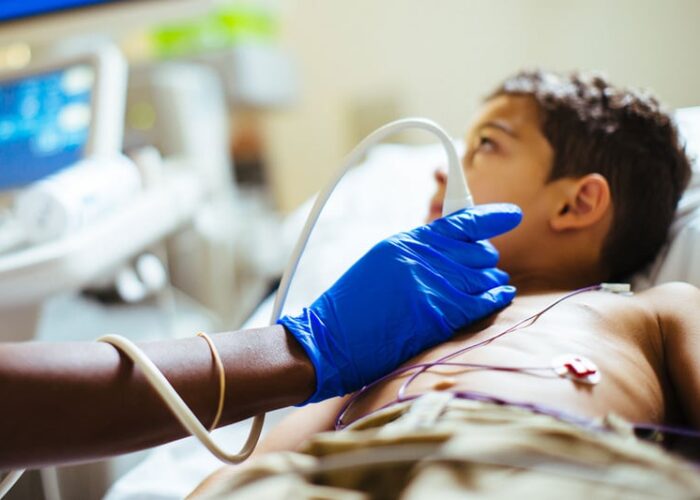
Echocardiogram
This test uses sound waves to make a moving picture of the heart called an
echocardiogram, also known as a cardiac ultrasound or sonogram. The sound waves are not felt by the person having the test and are not known to be harmful. The test does not hurt, but small children may be afraid of the room, the machine, and the new people performing the test. In general, most children cooperate with the test and no sedative needs to be given. However, a light sedative may be given if necessary. The test will usually take anywhere from 15 minutes to half an hour. A colorless gel is applied to the chest areas where the transducer, an electronic device similar to a microphone that converts sound into electrical or digital signals, will be placed to obtain various views of the heart. The patient may be asked at certain stages to move slightly, hold the breath, or breathe slowly. In general, the results of interpreting the echocardiogram will be given to the patient or to a child’s parent or guardian by the cardiologist immediately after the test.
How does echocardiography work?
The echocardiogram is created using an ultrasound machine connected to a
microphone-shaped transducer, which is placed near the part of the anatomy to be examined. The ultrasound machine emits sound waves that are too high for the human ear to hear (ultrasounds). These sound waves pass through the body and are reflected back to the transducer. The speed of transmission depends on the density of the objects encountered. These differences allow the machine to analyze the reflected sound waves and determine the sizes, shapes, and movements of the internal objects. This information is presented on a monitor screen as a moving image of the internal body structures. This is recorded and still images may be printed from it.
The types of echocardiogram include M-mode, or one dimensional views, which allow the heart chambers to be accurately measured, 2-D (two dimensional) views, which show a cross-section of the beating heart including valves, chambers, and major blood vessels, and Doppler views, which show colors that reflect the direction and velocity of blood flow. Recently, 3-D echocardiography has become available, allowing more complete, real-time visualization of cardiac anatomy and function.
